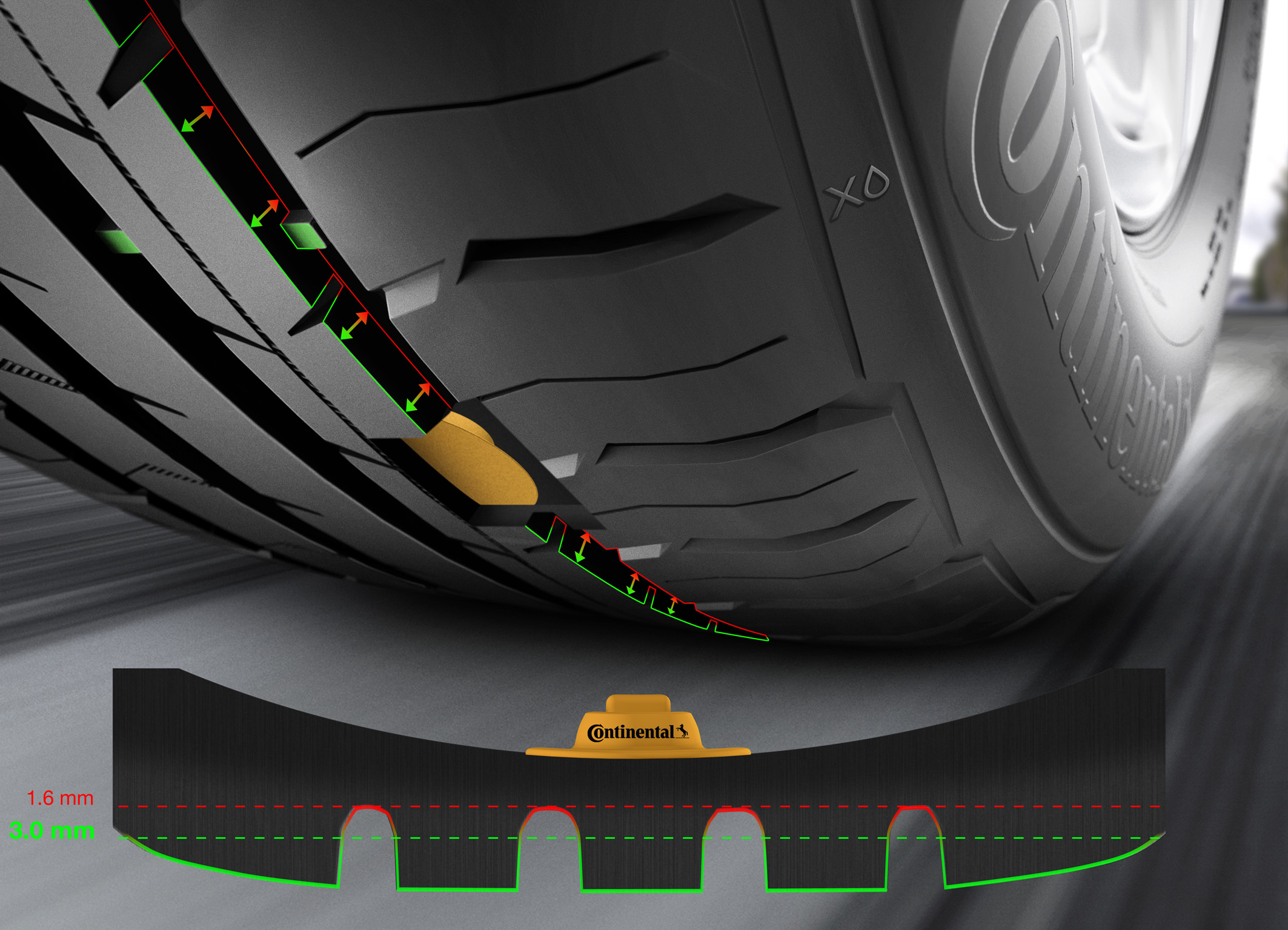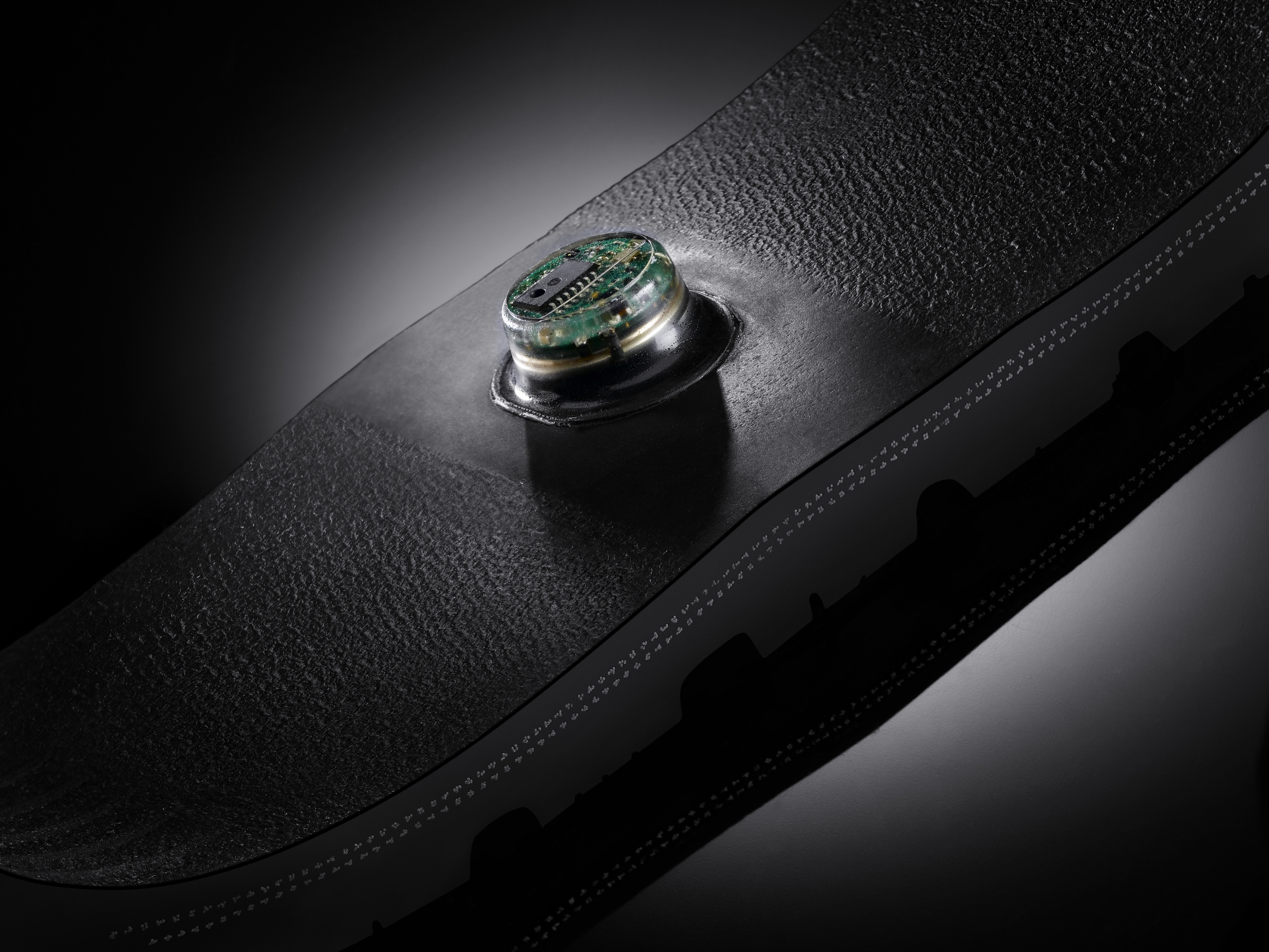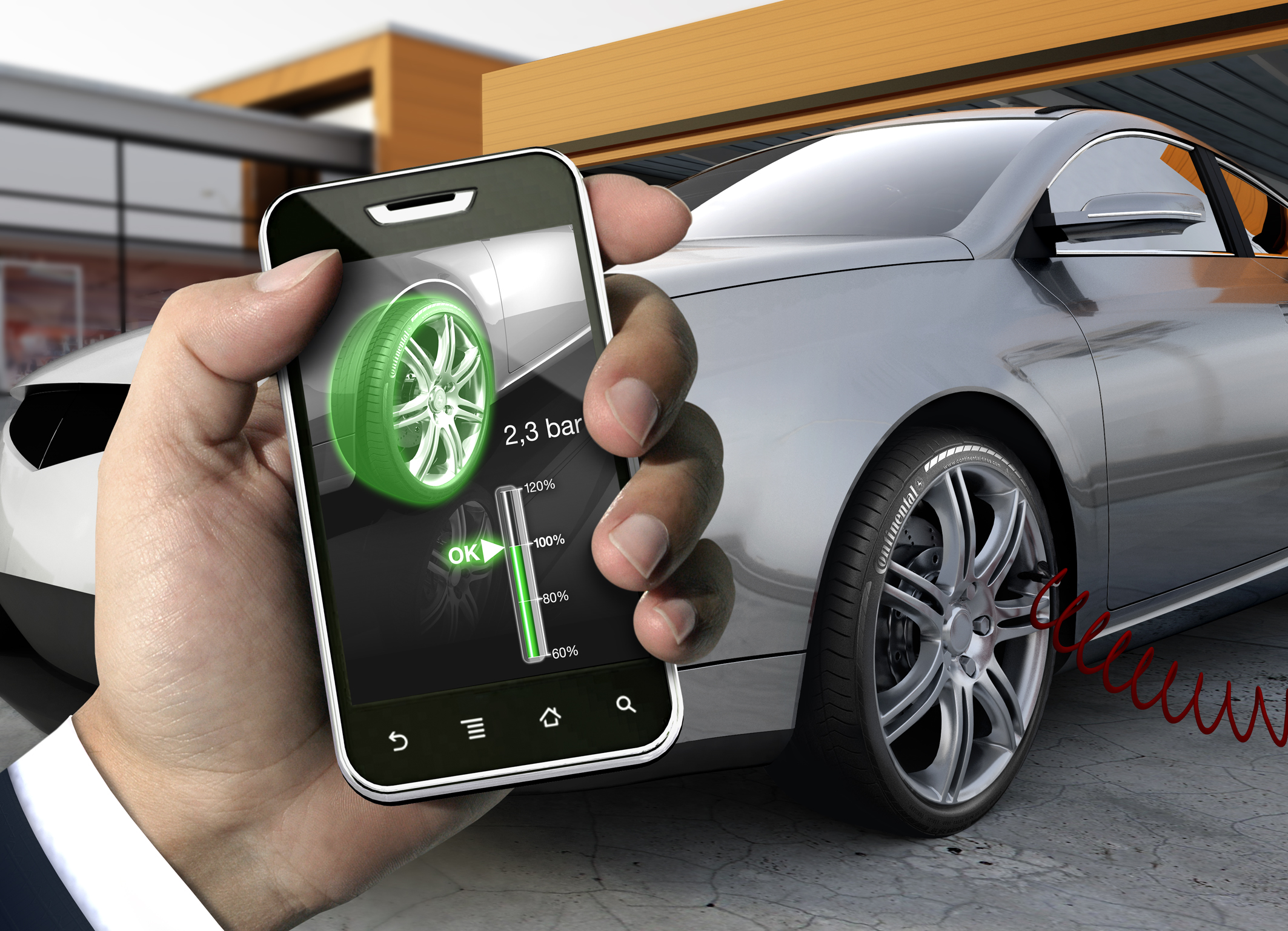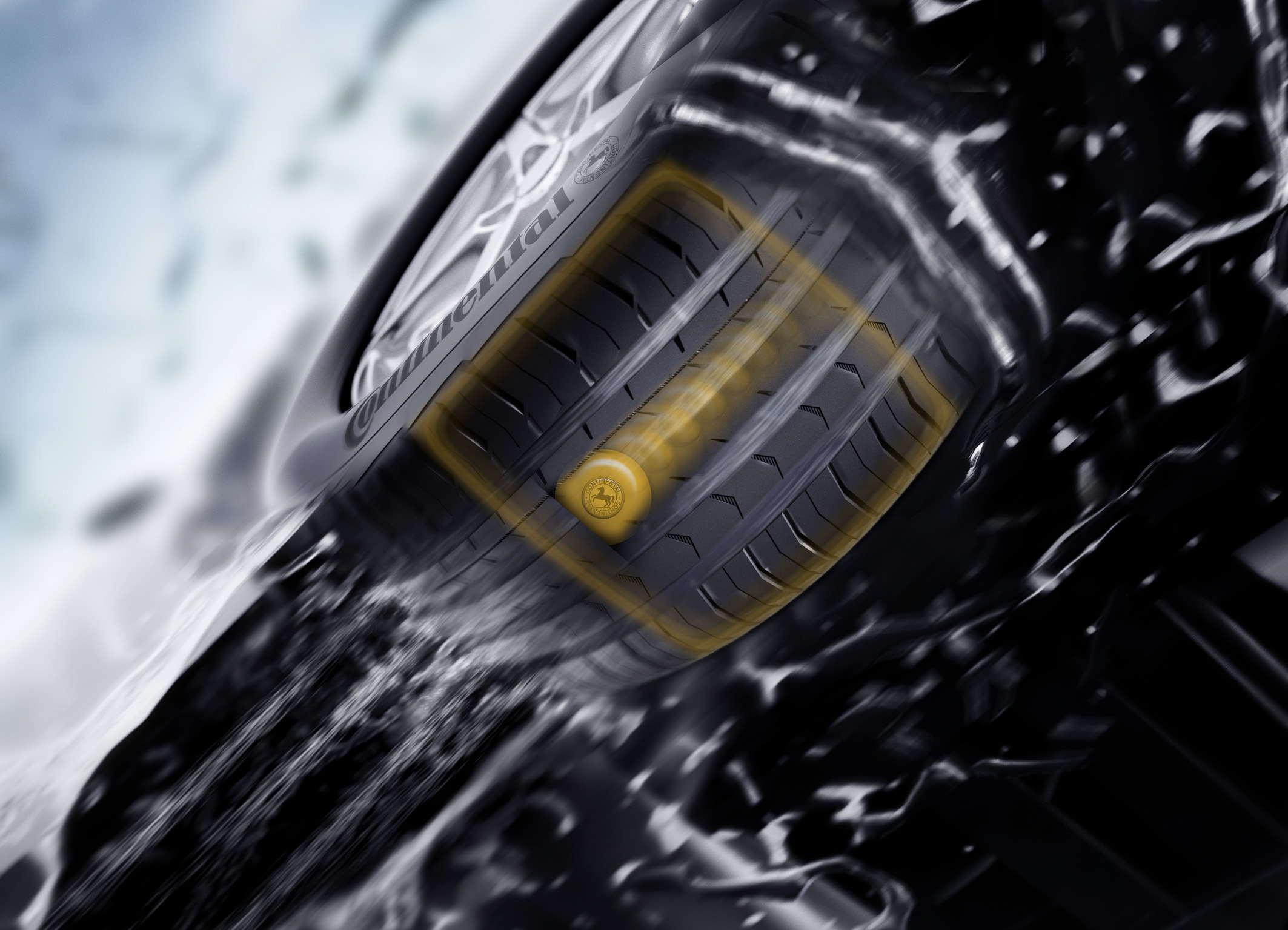In a near future, tire pressure sensors will be able to detect when a tire change is necessary due to insufficient tread depth. Explaining the importance of regular tread depth monitoring, Andreas Wolf, head of the Body & Security business unit at Continental, points out, “It’s not for nothing that legislators all over the world have defined a minimum tire tread depth for safe driving. We are delighted that we will, in future, be able to conveniently read tread depth electronically with the aid of sensors embedded in the tires.” Intelligent software makes the new feature possible. The software deduces tread depth from gradual changes in tire rolling characteristics. The in-tire pressure sensor infers running characteristics from the variations in tire deformation. The new feature is tentatively slated to be available as of 2017 in new vehicle models equipped with direct tire pressure monitoring systems (TPMS) from Continental (electronic Tire Information System, eTIS).
The tread depth detection system
For this completely new type of electronic tread depth detection, Continental engineers draw on a tire’s gradually changing rolling characteristics over a longer period of time. Tire and electronics developers conducted an intensive series of tests that allowed the basic data to be fed into the electronics of future vehicles. The specifics of the tires’ altered rolling characteristics are compared with the accumulated empirical data. If the tread is run down to below a tire-specific threshold value, the on-board electrical system signals that a tire change is due.
If so desired, the vehicle’s telematics module is capable of informing the local auto service center. People will anyway still be able to check for themselves when the recommended or legally required minimum tread depth has been reached. For this purpose, the tire has wet-TWI (tread wear indicators). These are small ridges between the tread grooves that indicate that the brand manufacturers recommended minimum allowable tread depth (3 millimeters in summer tires, 4 mm for winter tires) have been attained.
Tires becoming intelligent
Since 2002 and the introduction of the first tire pressure sensors from Continental, tire pressure sensors have been able to provide tire-by-tire information about the current tire pressure and warn drivers if tire pressure is too low. As of November 2014, a tire pressure monitoring system will become mandatory for newly registered passenger cars (Vehicle class M1) in the European Union. Tire sensors can help ensure optimum inflation pressure; this extends the life of a tire, reduces fuel consumption and, consequently, lowers CO2 emissions. Continental will rely on these direct measuring systems with pressure display. With these, a sensor reads the tire pressure either at the valve or directly under the tire tread.
Continental extending the operational scope of future tire sensors
Continental is working with car makers to further expand the range of features that in-tire pressure sensors can provide. Every tire loses air slowly. The tire pressure sensor ensures that drivers are informed of tire pressure loss at an early stage. Therefore they do not run the risk of driving with one or more dangerously underinflated tires. Initial car models equipped with intelligent sensors automatically signal when a tire being inflated has attained the required tire pressure. The Filling Assistant is a big help when inflating tires and guarantees the right tire pressure even when non-calibrated filling stations are used. Rolling resistance is reduced as a result and the tires perform at their maximum capability in terms of safety and comfort.
Load detection gearing up for series production
Another feature about to be produced is load detection. Here, the vehicle uses software developed by Continental to specifically detect whether the maximum permissible load has been exceeded. The electronics detect a change in rolling characteristics due to excessive load and inform the driver of the respective axle load. Future driver assistance systems will use the load information to adjust their functions to the respective vehicle weight. Over the long term, this makes automated driving features safer and more convenient.
Source: Continental
Romain’s opinion:
Thanks to these new features we could imagine implementing many software functions such as adapting the gear shifting strategy depending on the load, or automatically ordering new tires when the wear level is critically high. Do you think the accuracy of the depth and load calculation is good enough to allow such advanced software features?





















Hi Romain,
Besides what the technology is capable of, my main concern is how reliable this system will be especially with unbalanced tires and damaged rims.
Another problem may be the incompatibility with air, because of the humidity.
Reading tire tread deep is a nice feature, but, in my opinion, is just another “app”, and can lead to problems if there is no regular check-up, because a tire can me wearing incorrectly (deflated, bad geometry, etc).
So… let´s wait and see!
Regards
Miguel